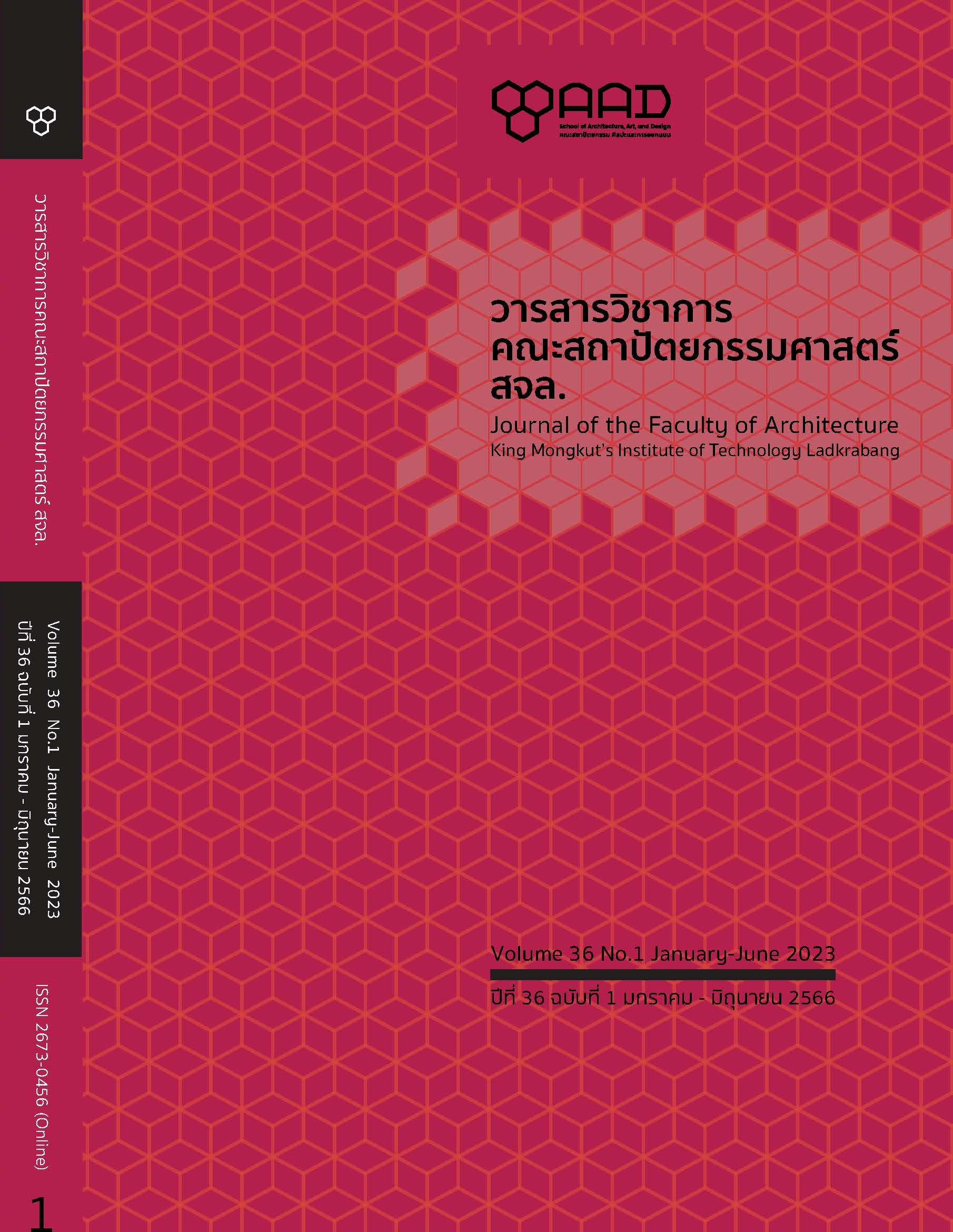The development of augmented reality media to promote historical and cultural secondary city tourism in the new normal: A case study of Phra Sri Rattana Mahathat Woramahawihan temple
Main Article Content
Abstract
The objectives of this research were 1) develop the augmented reality media to promote historical and cultural secondary city tourism in the new normal:A case study of Phra Sri Rattana Mahathat Woramahawihan temple in a real environment 2) compare the quality of media by three experts in content, technology, and language were obtained through purposive sampling. The research tool was an assessment form for the quality of media use the statistics used for data analysis were independent t-tests.
According to the research, augmented reality media can be used to draw tourists' attention. utilizing a different presentation technique in 3D format, appropriate for a new mode of transportation that eliminates the need for travel to the destination itself. Just being on a smartphone or computer can access tourist attractions. However, modeling was challenging requires many different programs and devices for taking pictures that have a high resolution. Expertise in operations and computing with high performance. Such media formats require a lot of time and money to produce. Using high-resolution images in 3D modeling can reduce the number of images in modeling. If the image has a high resolution, the model will have a high resolution and a large file size. In photography, the important factor is the light. Shoot in similar lighting conditions. Photographing large antiques should be angled 30 and 50 degrees to the center of the object to get a full view of the model. To increase the value of the media. There should be a famous monk's signature on the marker. The use of foreign language in communicating should use the narrative style more than the use of formal language. The media will become more realistic. Depending on the adjustment of the image resolution and the amount of light, the media in the creative universe environment can create newness in the form of tourism better. But there is a limitation that this format will require high internet speed. So it can be displayed well. Augmented reality media to promote historical and cultural secondary city tourism in the new normal: A case study of Phra Sri Rattana Mahathat Woramahawihan temple on the real environment and metaverse. Developed with the ADDIE model 5 process of analysis, design, development, implementation, and evaluation. The workpiece is divided into 8 pieces, consisting of Buddha Chinnarat Luang Pho To and the Ubosot, Luang Pho Khao, Luang Pho Kong, Phra Attharot, Phra Lue, and the Lord Buddha have reached nirvana in which each piece contains a video Shows a brief history of an ancient site or antiquities. Augmented Reality media in the real environment had more tools and complexity than in the imaginary universe. Overall, Augmented reality media in real environments It was of high quality where mean = 4.24 and Standard deviation = 0.54, and virtual reality media in The environment of metaverse was at the highest quality level, where mean = 4.42 and standard deviation = 0.49.
Article Details

This work is licensed under a Creative Commons Attribution-NonCommercial-NoDerivatives 4.0 International License.
This work is licensed under a Creative Commons Attribution-NonCommercial-ShareAlike 4.0 International License.
Copyright Transfer Statement
The copyright of this article is transferred to Journal of The Faculty of Architecture King Mongkut's Institute of Technology Ladkrabang with effect if and when the article is accepted for publication. The copyright transfer covers the exclusive right to reproduce and distribute the article, including reprints, translations, photographic reproductions, electronic form (offline, online) or any other reproductions of similar nature.
The author warrants that this contribution is original and that he/she has full power to make this grant. The author signs for and accepts responsibility for releasing this material on behalf of any and all co-authors.
References
กระทรวงการท่องเที่ยวและกีฬา. (2554). แผนพัฒนาการท่องเที่ยวแห่งชาติ พ.ศ. 2555-2559. กรุงเทพฯ: กระทรวงการท่องเที่ยวและกีฬา.
กิติพงษ์ กาละยศ. (2549). การเปรียบเทียบผลการรับรู้ระยะทางสัมพัทธ์ต่อตัวชี้นำระยะทางในภาพ 3 มิติบนหน้าจอคอมพิวเตอร์. (วิทยานิพนธ์ครุศาสตรอุตสาหกรรมมหาบัณฑิต สาขาวิชาเทคโนโลยีเทคนิคศึกษา บัณฑิตวิทยาลัย, สถาบันเทคโนโลยีพระจอมเกล้าพระนครเหนือ).
ชาติชาย ไวยสุระสิงห์. (2563). การสำรวจด้วยภาพถ่าย Photogrammetry. กรุงเทพฯ: ซีเอ็ดยูเคชั่น.
ไทยโพสต์. (2565). เมืองรอง 2021 ไปแล้วจะร้องว้าว!. เข้าถึงได้จาก: https://www.thaipost.net/main/detail/88321
พนิดา ตันศิริ. (2553). โลกเสมือนผสานโลกจริง Augmented Reality. วารสารนักบริหาร มหาวิทยาลัยกรุงเทพ. 30(2), 169-173.
พยอม ธรรมบุตร. (2549). เอกสารประกอบการเรียนการสอนเรื่องหลักการท่องเที่ยวเชิงอนุรักษ์. กรุงเทพฯ: สถาบันพัฒนาการท่องเที่ยวเพื่ออนุรักษ์สิ่งแวดล้อม มหาวิทยาลัยศรีนครินทรวิโรฒ.
พิสุทธา อารีราษฎร์. (2551). การพัฒนาซอฟแวร์ทางการศึกษา. มหาสารคาม: มหาวิทยาลัยราชภัฏมหาสารคาม.
มนต์ชัย เทียนทอง. (2554). การออกแบบและพัฒนาบทเรียนคอมพิวเตอร์. พิมพ์ครั้งที่ 3. กรุงเทพฯ: ภาควิชาคอมพิวเตอร์ศึกษา คณะครุศาสตร์อุตสาหกรรม สถาบันเทคโนโลยีพระจอมเกล้าพระนครเหนือ.
วชิระ อินทร์อุดม. (2539). เอกสารประกอบการสอนวิชา 121 703 การผลิตวีดิทัศน์เพื่อการศึกษา. ขอนแก่น: ภาควิชาเทคโนโลยีการศึกษาคณะศึกษาศาสตร์ มหาวิทยาลัยขอนแก่น.
ศิริพร เสนานุช. (2563). การสร้างแบบจำลองสามมิติของโบราณวัตถุสำหรับความจริงเสมือนด้วยการสำรวจด้วยภาพถ่ายระยะใกล้. (วิทยานิพนธ์วิทยาศาสตรบัณฑิต สาขาวิชาภูมิศาสตร์, มหาวิทยาลัยนเรศวร).
สำนักงานประชาสัมพันธ์จังหวัดพิษณุโลก. (2566). วัดพระศรีรัตนมหาธาตุวรมหาวิหาร. เข้าถึงได้จาก: https://phitsanulok.prd.go.th/th/content/category/detail/id/282/iid/8426
สำนักงานพัฒนาวิทยาศาสตร์และเทคโนโลยีแห่งชาติ. (2565). BCG in Action: สาขาการท่องเที่ยวและเศรษฐกิจสร้างสรรค์. เข้าถึงได้จาก: https://waa.inter.nstda.or.th/stks/pub/2021/bcg-in-action-tourism-creative-economy.pdf
สำนักงานเลขาธิการสภาผู้แทนราษฎร. (2565). ห้องสมุดในจักรวาลนฤมิต. เข้าถึงได้จาก: https://library.parliament.go.th/th/radioscript/rr2565-oct5
สุรพงษ์ วิริยะ อนันตทรัพย์, สุขประดิษฐ์ และรษา ทองคงอยู่. (2560). การพัฒนาเทคโนโลยีการท่องเที่ยวเชิงวัฒนธรรมเสมือนจริงในจังหวัดนครสวรรค์. รายงานสืบเนื่องจากการประชุมระดับชาติ สถาบันวิจัยมหาวิทยาลัยราชภัฏกำแพงเพชร. 1, 1253-1260.
UNWTO. (1997). Tourism 2020 Vision. Madrid: UNWTO.


